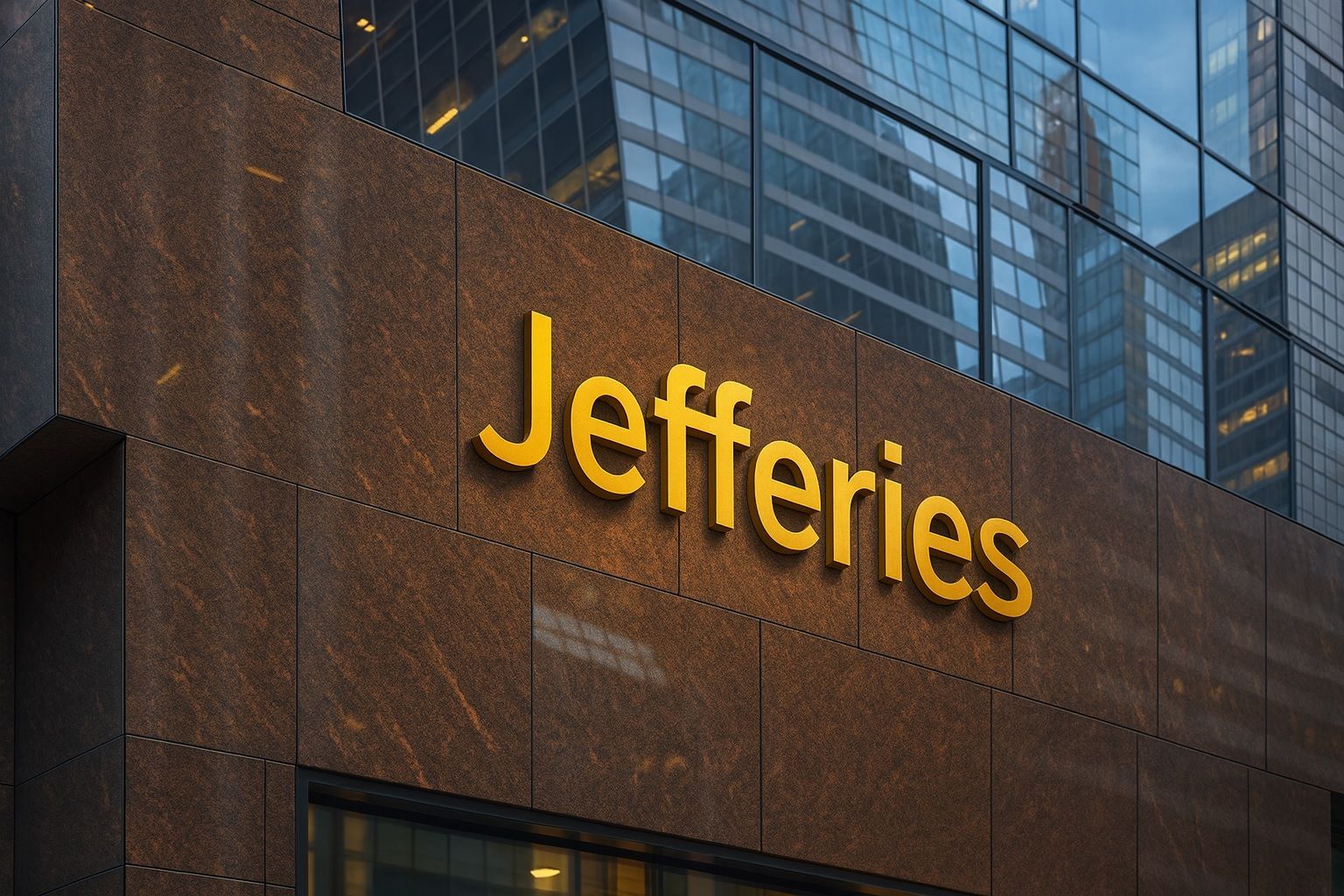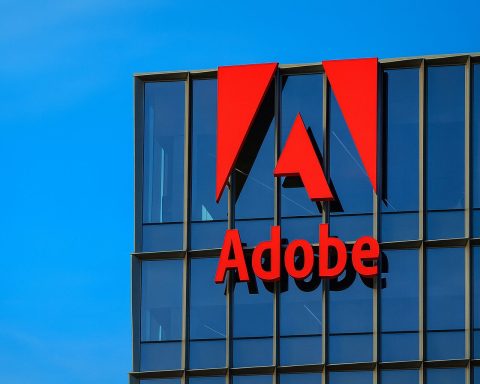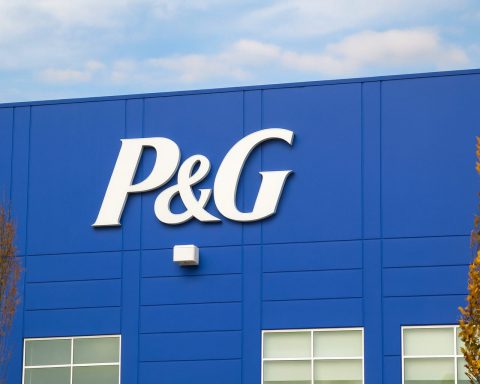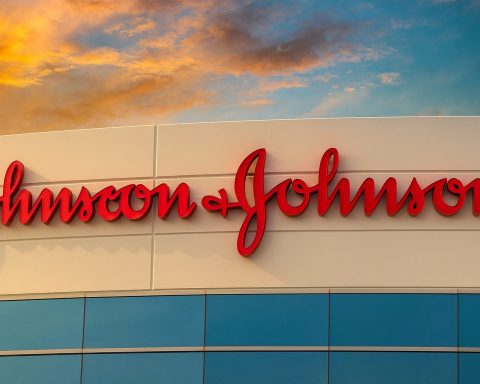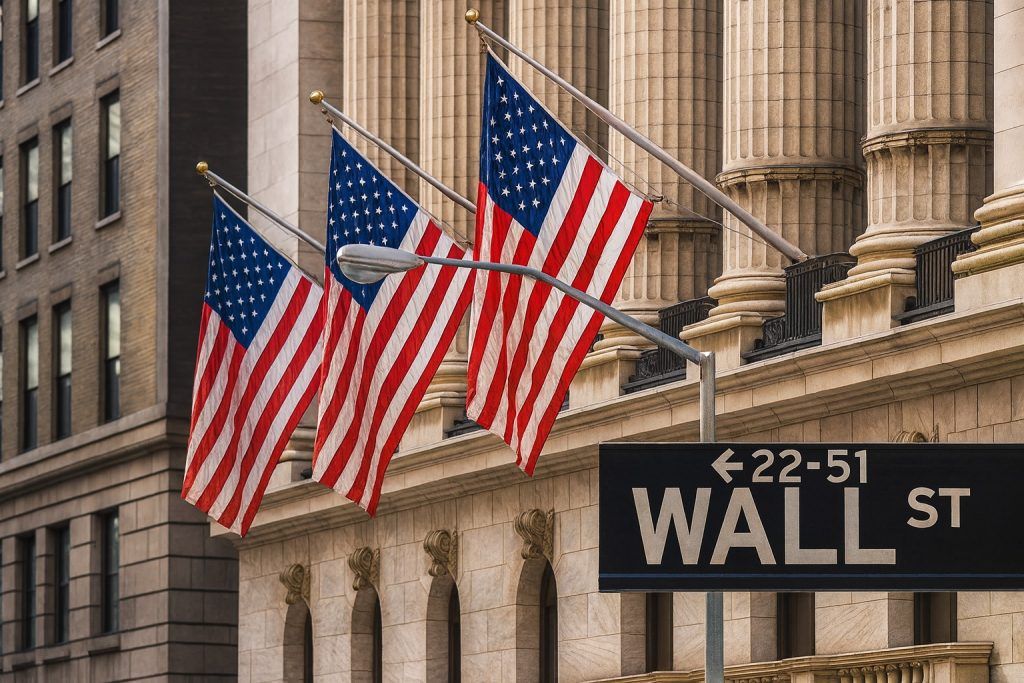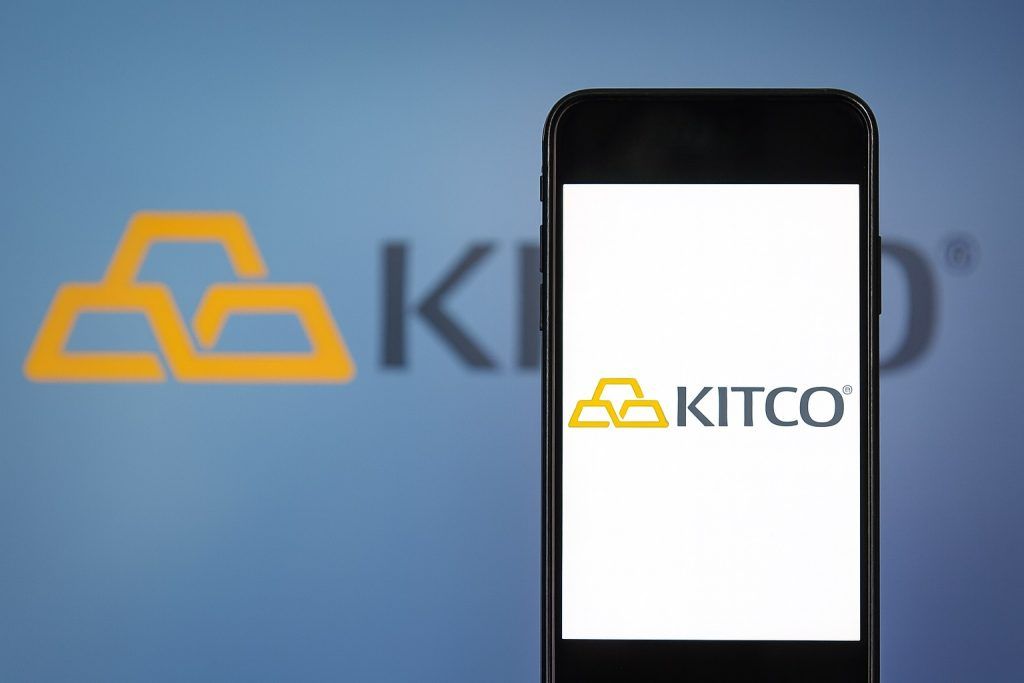- Massive Auto-Parts Bankruptcy: First Brands Group – a major U.S. aftermarket auto-parts supplier behind brands like TRICO wipers and FRAM filters – filed for Chapter 11 bankruptcy on September 28, 2025, listing an eye-popping $10–$50 billion in liabilities against $1–$10 billion in assets [1]. It is one of the largest corporate failures of the year, following weeks of turmoil as the highly leveraged company’s finances rapidly deteriorated.
- Hidden Debt and Irregularities: The collapse has exposed serious red flags. Media reports revealed First Brands had nearly $2 billion in off-balance-sheet debt (factoring arrangements) that it hadn’t properly disclosed [2], on top of a spree of debt-fueled acquisitions that left it overextended. Now creditors claim as much as $2.3 billion has “simply vanished” from First Brands’ supply-chain financing programs [3]. A court-appointed special committee is investigating potential misconduct, including whether First Brands double-financed invoices or misdirected receivables funds [4] [5]. One creditor, Raistone, has asked for an independent examiner, calling the internal probe “woefully insufficient” given the huge sums unaccounted for [6].
- Jefferies’ Painful Exposure: Investment bank Jefferies Financial Group – First Brands’ go-to lender for years – has been stung by the bankruptcy. Jefferies disclosed that a fund it manages (Point Bonita Capital, under its Leucadia Asset Management arm) had about $715 million tied up in First Brands’ receivables [7] – nearly a quarter of that fund’s $3 billion portfolio [8]. Those receivables are payments owed by retailers like Walmart and AutoZone for auto parts, which First Brands was supposed to forward to Jefferies’ fund. Trouble surfaced around September 15, when First Brands stopped remitting payments to the fund as its cash crunch worsened [9]. Jefferies says it is working “diligently” with First Brands’ advisors and will “exert every effort to protect the interests and enforce the rights of Point Bonita and its investors” [10].
- Shares Slide, Losses ‘Manageable’: Jefferies’ stock fell on the disclosure – down about 2% in afternoon trading Oct 8 [11] and closing around $54.44 that day (roughly 14% lower than a week prior) [12]. However, analysts at Morgan Stanley estimate the bank’s maximum loss at only ~$45 million, given Jefferies’ limited direct stake in the fund (about $113 million equity) and other loans [13] [14]. They called that hit “manageable” relative to Jefferies’ overall capital base [15]. Jefferies also noted it has a 50% interest in a credit portfolio that held about $48 million of First Brands loans [16], but overall the bank insists its exposure is modest. In other words, Jefferies should weather the storm, though the saga has prompted scrutiny of its risk management.
- Wider Fallout – UBS and Others: The contagion is not limited to Jefferies. Swiss banking giant UBS revealed it faces over $500 million in exposure to First Brands across several investment funds [17], including its O’Connor hedge fund unit (recently sold to investors). Numerous other creditors are on the hook as well. Court filings list firms like CIT Group, Nomura, SouthState Bank, and UBS’s O’Connor among major unsecured lenders to First Brands’ supply-chain finance programs [18]. Hedge fund Millennium Management reportedly had to write down about $100 million on First Brands debt investments [19]. Even regional banks and specialty finance firms that bought First Brands’ invoices are facing losses – one trade-finance lender, Katsumi, is owed $1.75 billion in unpaid receivables [20] [21]. In total, at least $866 million in supplier receivables financing is now at risk of non-repayment [22], and possibly far more given the alleged $2.3 billion black hole.
- Private Credit’s “Magical Machine” Exposed: First Brands’ implosion is shining a light on the opaque world of private credit and supply-chain finance that had propped it up. The company relied on complex financing deals with non-bank lenders to keep cash flowing – a web of borrowing that legendary short-seller Jim Chanos has dubbed a “magical machine” until it suddenly breaks [23]. “First Brands probably won’t be the last cautionary tale showcasing the dark side of a private credit web gone wrong,” one market commentator warned [24]. Analysts note the situation echoes the Greensill Capital scandal in 2021 – the largest trade-finance blowup to date – which left banks and insurers with heavy losses after invoices were double-counted and Credit Suisse was rocked by the fallout [25] [26]. The First Brands saga is raising fresh questions about these little-known financing arrangements and whether more oversight is needed to prevent abuse.
- Market Jitters and Outlook: The bankruptcy has rattled confidence in the broader debt market, especially coming on the heels of another auto-sector failure (subprime car lender Tricolor Holdings filed for bankruptcy just weeks earlier) [27]. “Financial troubles at [First Brands], coupled with the recent bankruptcy of subprime auto lender Tricolor, have… stoked fears of broader stress in corporate debt markets,” Reuters reported, citing anxious bondholders and bankruptcy experts [28]. For now, First Brands has secured $1.1 billion in new financing to continue operating through bankruptcy and maintain shipments to retailers [29]. The company aims for an orderly reorganization – possibly selling off divisions or converting debt to equity – to “stabilize [its] operations and facilitate a value-maximizing transaction” in Chapter 11 [30]. Observers say the priority is to preserve First Brands’ business and valuable brands as a going concern, avoiding a fire-sale liquidation [31]. Looking ahead, this saga is a wake-up call: With interest rates high, more highly indebted companies may stumble, and both investors and regulators are likely to scrutinize private credit deals more closely. As one analyst put it, if the world of corporate credit doesn’t face greater scrutiny, “the entire house of cards could fall.” [32]
First Brands’ Debt-Fueled Rise and Spectacular Fall
First Brands Group’s journey from industry consolidator to bankruptcy cautionary tale was swift and dramatic. The company – a leading supplier of replacement auto parts like oil filters, brake pads and windshield wipers – grew aggressively through debt-financed acquisitions in the 2010s [33]. By 2025, it owned well-known aftermarket brands such as Raybestos (brake components), TRICO (wiper blades) and FRAM (engine filters), selling through major retailers like Walmart and AutoZone [34]. However, this rapid expansion came at the cost of a towering debt load that far outpaced its earnings.
Over the summer of 2025, warning signs emerged that First Brands’ finances were unraveling. In August, the company halted a planned $6 billion debt refinancing after some lenders demanded independent audits of its books [35]. A bombshell revelation followed in late September: First Brands had quietly run up nearly $2 billion in off-balance-sheet borrowings through factoring (selling its receivables for cash) – obligations that were not disclosed on its balance sheet [36]. This news shocked creditors and ratings agencies, who realized the company’s actual debt was far higher than believed. Along with years of aggressive borrowing, the hidden factoring deals left First Brands “with an enormous debt load,” as one account noted [37]. By mid-September, the company’s loans were trading at distress levels – some First Brands bonds plunged to around 30 cents on the dollar – as investors braced for a default [38].
The end came quickly. On September 28, 2025, First Brands Group filed for Chapter 11 bankruptcy protection in the Southern District of Texas, listing a staggering $10–$50 billion in liabilities (vs. only $1–$10 billion in assets) [39]. This made First Brands one of the largest corporate bankruptcies in recent memory. The filing followed the failure of several related financing vehicles a few days prior [40], suggesting the cash crunch had spread across its complex financing web. In court, First Brands secured $1.1 billion in debtor-in-possession (DIP) financing from an ad-hoc group of its lenders to keep the business operating during bankruptcy [41]. The company assured that its U.S. stores and distribution centers would keep running and that employees and suppliers would be paid under court supervision [42]. Only the U.S. subsidiary filed bankruptcy – First Brands’ international units were not included, allowing overseas operations to continue normally [43].
Despite these arrangements to stabilize operations, the bankruptcy proceedings have revealed serious concerns about financial improprieties at First Brands. Court documents indicate that roughly $2.3 billion tied to First Brands’ receivables factoring programs “has simply vanished,” according to one creditor’s allegations [44]. In an October 1 hearing, lawyers stated that about $1.9 billion that First Brands was supposed to pass on to its factoring lenders was never forwarded [45] [46]. A court-appointed special committee of First Brands’ board is now investigating these “potential irregularities,” including whether the company double-pledged receivables or diverted funds improperly [47] [48]. However, some creditors are skeptical of an internal probe. Working-capital finance firm Raistone – which itself made as much as 80% of its revenue from First Brands and is now stuck with unpaid invoices – filed an emergency motion on October 8 seeking an independent examiner to dig into what it calls “deeply concerning” potential misconduct [49]. Raistone’s filing asserts that First Brands’ own special committee is insufficiently independent, noting the company’s representatives could not account for the missing $1.9 billion when pressed in court (First Brands’ counsel reportedly answered, “We don’t know… $0” when asked how much was in the supposed reserve accounts) [50].
In short, First Brands’ downfall appears not just to be a story of too much debt, but also of poor transparency and possible mismanagement. The combination of leveraged expansion, opaque financing tactics, and alleged failures to safeguard creditors’ funds created a perfect storm. As Fitch and S&P quickly downgraded First Brands to near-default, analysts grimly noted that “only a bankruptcy could resolve its debt problem” [51]. That prediction proved true. What’s left now is a colossal bankruptcy case aimed at untangling billions in claims – and figuring out where all that money went.
Jefferies’ Deep Ties and $715 Million Shock
One reason the First Brands saga is reverberating on Wall Street is the central role played by Jefferies Financial Group, a well-known investment bank. Jefferies was no mere bystander to First Brands’ rise and fall – it was in many ways the architect of First Brands’ financing. For over a decade, Jefferies served as First Brands’ primary banker, advising on its acquisitions and arranging its debt deals [52]. As recently as this summer, Jefferies was leading the effort to refinance $6 billion of First Brands’ loans, before that deal was derailed amid investor concerns [53]. This long relationship helps explain why Jefferies ended up so exposed when First Brands hit the wall.
The biggest hit to Jefferies comes via an obscure in-house investment vehicle: Point Bonita Capital, a trade-finance fund managed by Jefferies’ Leucadia Asset Management division. Point Bonita specializes in buying up corporate receivables – essentially, fronting cash to companies like First Brands in exchange for the money those companies are owed by their customers. According to Jefferies’ disclosures, Point Bonita had about $715 million invested in receivables owed by First Brands’ customers (such as big-box retailers and auto parts chains) [54]. This sum amounted to roughly 25% of Point Bonita’s $3 billion portfolio [55] – an unusually large single-company concentration for a fund.
Crucially, First Brands itself acted as middleman in this arrangement: when First Brands sold parts to a retailer, Point Bonita would purchase the invoice, and the retailer’s payments were supposed to be forwarded to Point Bonita by First Brands [56]. For a while, this “magical” financing machine worked, providing First Brands with quick cash. But by mid-September, as First Brands’ liquidity dried up, cracks appeared. On September 15, First Brands stopped forwarding the payments it was collecting from customers to Point Bonita [57]. In other words, the pipeline of cash broke – First Brands may have been holding onto incoming cash it desperately needed to stay alive, instead of paying the fund. Jefferies has not elaborated on the exact cause, but the timing coincided with First Brands’ final scramble to stay solvent.
Jefferies went public about the exposure on October 8, presumably to reassure its own investors. It confirmed the $715 million in at-risk receivables, and clarified that Jefferies’ own money at stake was limited. The bank said most of the risk is borne by third-party investors in the Point Bonita fund; Jefferies’ Leucadia unit holds a $113 million equity stake in the fund [58]. Beyond that, Jefferies also acknowledged it had a 50% ownership stake in a credit partnership (Apex Credit Partners) that itself held about $48 million of First Brands loans through various CLOs (collateralized loan obligations) [59]. Adding those up, analysts estimate Jefferies’ direct financial exposure to First Brands’ collapse is on the order of $40–50 million. Morgan Stanley analysts pegged the “maximum potential loss at about $44.6 million” – an amount they called “manageable” given Jefferies’ overall equity base [60]. In other words, even in a worst-case scenario (if those receivables and loans are a total loss), Jefferies can absorb it.
Jefferies’ leadership has been emphatic that they will fight to recover as much as possible. “We intend to exert every effort to protect the interests and enforce the rights of Point Bonita and its investors,” the bank declared in a statement [61]. Jefferies is in active talks with First Brands’ restructuring advisors to determine how the Point Bonita claims will be treated in bankruptcy [62]. A key question is whether the fund’s receivables will ultimately be paid by the retailers (and if so, when, and into whose hands). First Brands’ own filings indicate there may be disputes over whether certain receivables were “turned over to third-party factors upon receipt” or possibly pledged more than once [63], which could complicate recoveries. Jefferies will likely push hard in court to ensure the Point Bonita fund’s rights are recognized as senior claims on those customer payments.
The market has been watching Jefferies nervously since First Brands’ troubles emerged. When the bankruptcy news hit and Jefferies’ exposure became apparent, Jefferies’ stock (NYSE: JEF) tumbled. On Oct 8, as Jefferies disclosed details, the stock fell roughly 2% in midday trading [64] and ultimately closed around $54.44 – down nearly 9% from the prior day’s close and about 14% lower than a week earlier [65]. This indicates investors were initially caught off guard by how intertwined Jefferies was with First Brands. However, once Jefferies outlined the limited financial impact, the stock stabilized. Rating agencies did not announce any downgrades of Jefferies, and the bank has other positive news (it is scheduled to host an Investor Day on Oct 16, 2025, where it will likely address these issues and its broader strategy). In short, while Jefferies took a reputational hit, the consensus is that the direct damage is contained. A $45 million loss is a headache, not a catastrophe, for a firm of Jefferies’ size (roughly a $11 billion market cap) [66]. But the episode has put a spotlight on Jefferies’ risk management practices – e.g. why one of its funds had such outsized exposure to a single borrower, and what oversight was in place.
Broader Fallout: Who Else Got Burned?
Beyond Jefferies, a web of global banks, funds, and investors are now grappling with losses from First Brands’ collapse. As details emerge in court filings, it’s clear the company’s “private credit web” ensnared many players:
- UBS Group AG: UBS, one of Europe’s biggest banks, disclosed it is examining the impact of First Brands’ bankruptcy on several UBS-affiliated investment funds [67]. UBS appears to have more than $500 million in exposure through these vehicles. Notably, First Brands’ creditor list includes UBS’s O’Connor Capital – a hedge fund unit UBS only recently sold to its managers, suggesting O’Connor funds had significant positions in First Brands receivables or loans [68]. The Wall Street Journal reported UBS’s exposure, highlighting that even a top-tier bank was caught in the fray of First Brands’ financing (via complex fund investments rather than direct loans) [69]. UBS has said it’s still analyzing potential losses and hasn’t yet given a figure, but the scale (half a billion dollars) underscores how widely First Brands’ financing tentacles spread.
- Trade Finance Lenders: First Brands leaned heavily on supply-chain financing — in essence, borrowing against its inventories and invoices. Aside from Jefferies’ Point Bonita, other niche finance firms were involved. Court documents show that Katsumi Global, a working-capital lender, is owed a whopping $1.75 billion for receivables it bought from First Brands [70] [71]. Katsumi is a joint venture of Japanese institutions (Mitsui & Co and Norinchukin Bank), illustrating that even foreign capital was drawn into funding First Brands’ sales. Two international banks – Bank ABC and ING Belgium – have admitted they purchased rights to some First Brands receivables via Katsumi’s programs [72] [73]. Meanwhile, U.S.-based platform Raistone (which facilitated supply-chain finance for First Brands) derived the majority of its revenue from that relationship and has suffered a severe blow, even laying off staff after First Brands went under [74]. Raistone’s exposure hasn’t been fully quantified, but it is among the creditors now clamoring for an independent investigation (after being left with unpaid invoices).
- Hedge Funds and Asset Managers: First Brands’ debt had made its way into various investment portfolios. For example, Millennium Management, a prominent hedge fund, reportedly lost on the order of $100 million due to the markdown of First Brands loans and bonds in its funds [75]. Other big credit investors like Apollo Global Management and Diameter Capital had been trading First Brands’ debt as well – some had even taken short positions (essentially betting against the company’s credit) earlier in the summer [76]. Apollo and Diameter were said to have wagered on a First Brands collapse by shorting its loans (and closed out those bets profitably before the bankruptcy) [77]. Such maneuvers indicate that some savvy players saw the writing on the wall, while others were caught over-exposed when the music stopped.
- Regional and Niche Banks: Among First Brands’ list of creditors are several regional U.S. banks and specialty lenders that might not be household names but are now dealing with losses. CIT Group (a commercial lender), SouthState Bank (a regional bank in the Southeast U.S.), and Nomura (the Japanese bank) were all listed as major unsecured creditors tied to First Brands’ supply-chain finance deals [78]. These likely provided funding or guarantees in inventory financing programs. Their inclusion shows how First Brands tapped a broad pool of capital – not just big Wall Street firms, but also smaller banks seeking high-yield investments – to fuel its operations. Those creditors now join the line in bankruptcy court hoping to recover at least a fraction of what they’re owed.
In sum, First Brands’ collapse is rippling across the financial system – though, importantly, the pain is distributed and not large enough (in any single case) to threaten the stability of major institutions. It’s more of a constellation of localized hits: a $100 million loss here, a $50 million write-down there. For example, UBS’s >$500 million exposure is significant, but for a bank of UBS’s size, it’s manageable and likely won’t affect depositors or core capital in a severe way. Likewise, Jefferies’ ~$45 million loss estimate is small relative to its earnings (for context, Jefferies earned about $1.7 billion in net income in 2024). Many of the other affected parties are funds or creditors that knowingly took on risk for higher yield – they’ll suffer losses, but they are in the business of absorbing such hits.
That said, confidence in some corners of the market has been shaken. Lenders that participated in similar supply-chain finance programs are undoubtedly re-examining their exposure. The revelation that $1.9 billion of supposed collateral can vanish due to a borrower’s actions is a wake-up call. Creditors are now keenly aware that complex private financing deals can carry hidden risks – including the risk of outright fraud or double-pledging. This could make banks and funds more cautious about extending such financing to other midsize companies unless greater transparency and safeguards are in place.
The “Magical Machine” of Private Credit Under Scrutiny
First Brands Group’s downfall is fast becoming a referendum on the darker side of private credit markets, especially the niche area of trade finance and supply-chain lending. In recent years, many highly indebted companies have turned to non-bank lenders and creative financing to stay afloat – what Jim Chanos colorfully calls the “magical machine” of private credit that can conjure up liquidity in tough times [79]. First Brands epitomized this trend: when traditional banks grew wary of its debt load, it leaned on less-regulated financing from funds, hedge funds, and fintech-like platforms to keep the wheels turning. This worked – until it didn’t.
Now, with First Brands in bankruptcy and allegations of missing funds flying, experts are drawing parallels to the Greensill Capital debacle a few years ago [80] [81]. Greensill was a high-profile supply-chain finance firm that collapsed in 2021 after it was revealed to be juggling and repackaging corporate receivables in unsustainable ways. That collapse famously led to billions in losses for Credit Suisse and other investors, when many of Greensill’s loans (backed by invoices from companies that couldn’t pay) went bad. While the details differ – Greensill was a lender, whereas First Brands is the borrower – the common thread is opacity. In both cases, complex financial engineering obscured the true risk and debt of the companies involved, until it was too late. “It’s the latest blow up in the murky world of trade finance,” Bloomberg observed, noting that the sector “has been hit by numerous frauds in recent years, often leaving banks and insurers facing losses.” [82] Indeed, beyond Greensill, there have been other scandals (for instance, commodity trade finance frauds) where invoices or collateral were manipulated. First Brands’ suspected double-factoring of receivables (if proven) would rank high among those schemes.
The commentary from market veterans has been blunt. Hedge fund legend Jim Chanos has warned that First Brands is a prime example of the “magical machine” of private credit blowing up – essentially exposing how some companies have become overly reliant on “obscure financing practices” to stay solvent [83]. These practices can include things like supplier financing, inventory loans, and factoring agreements that are layered and opaque. They often involve non-public transactions, so even experienced investors can struggle to understand a company’s true financial position. In First Brands’ case, Chanos and others suggest that the company’s ability to continuously raise cash from such private sources created an illusion of stability – until confidence evaporated and the whole house of cards collapsed.
Regulators and industry observers are now asking whether greater transparency and oversight is needed in this corner of the market. Notably, First Brands’ downfall has already prompted internal investigations and legal motions to uncover any wrongdoing. If evidence shows that First Brands misrepresented its financings or engaged in fraud (for example, pledging the same receivable to multiple lenders), there could be legal consequences for individuals involved. It might also spur regulators to issue new guidance on disclosure of supply-chain financing. Over the past year, accounting bodies have been debating rules for companies to report obligations like factoring and supplier finance more clearly on balance sheets (precisely to avoid “surprise debts” as seen with First Brands). This bankruptcy could accelerate such reforms.
From an investor standpoint, the First Brands saga serves as a caution. High-yield opportunities in private credit – lending to leveraged companies at juicy interest rates – come with high risks. The old adage “no free lunch in finance” applies. Lenders attracted by First Brands’ double-digit interest rates may have underestimated the hazard of the company’s opaque finances. As one analyst quipped, when the stock market is booming, “it feels like the good times will last forever. But the world of corporate credit has to stand up to scrutiny, otherwise the entire house of cards could fall.” [84] In other words, confidence is key – and confidence in complex credit arrangements can evaporate overnight if investors suspect they’re not getting the full story.
At the same time, it’s important to emphasize: this is not a systemic financial crisis. The phrase “house of cards could fall” is a warning, not a prediction that First Brands will trigger a 2008-style collapse. The exposure, while large in absolute terms, is fairly contained among professional investors and specific funds. “At least this time it doesn’t seem like Jefferies or UBS will go out of business,” as one market column dryly noted, contrasting it with Greensill where a major bank (Credit Suisse) was severely damaged [85]. Jefferies and UBS will take a financial bruise and a reputational lesson, but they remain solid. Nonetheless, the fear is that there are other “First Brands” ticking away out there – companies loaded with hidden debt supported by a daisy-chain of private loans. With interest rates now at their highest in 15+ years, highly leveraged businesses are under strain, and lenders may be less forgiving. This could lead to more defaults and revelations of creative financing gone wrong.
In summary, First Brands’ collapse is forcing the private credit industry to do some soul-searching. It highlights the need for better risk management and transparency in non-bank lending. As the dust settles, we may see investors demand more visibility into companies’ off-balance-sheet financing, and funds like Point Bonita may diversify their exposures more prudently. The “magical machine” of easy credit is grinding to a halt, and a more sober, eyes-open approach to corporate lending is likely on the horizon.
Outlook: Restructuring Ahead and Lessons Learned
As First Brands enters bankruptcy, the road ahead will focus on restructuring the company and maximizing value for stakeholders – while simultaneously cleaning up the mess left in the financial system. Here’s what to watch for in the coming months:
– Restructuring the Business: First Brands’ goal in Chapter 11 is to survive and emerge as a viable company (rather than be liquidated). In its initial filings, management stated that the bankruptcy process is intended to “stabilize [the company’s] business operations and facilitate a value-maximizing transaction.” [86] That could mean selling the company or parts of it to new owners, or converting a large portion of the debt into equity owned by the creditors. The $1.1 billion in DIP financing gives First Brands a cash lifeline to maintain operations in the interim [87]. Industry experts note that First Brands’ underlying business – supplying aftermarket car parts – is fundamentally sound in that cars will continue to need replacement parts, and the company has strong brands and market share. This makes it likely that buyers or investors will emerge once the debt is reduced. The bankruptcy court has approved an initial $500 million draw on the DIP loan to fund operations, and vendors and employees are being paid as usual for now [88]. A team of well-known restructuring advisors (including Weil Gotshal as legal counsel and Lazard as investment banker) has been hired to negotiate with creditors and solicit bids [89]. Any reorganization plan will probably involve creditors taking control (debt-for-equity swap) or a sale to a private equity firm or competitor. The timeline for resolution is uncertain – large bankruptcies can take many months or even years to fully resolve – but we can expect key developments (such as an initial reorganization plan or asset sale) in the next few quarters.
– Recovery for Creditors: One of the thorniest questions is how the various creditor groups – especially those in the supply-chain finance programs – will fare. The revelation of potential misconduct (vanished funds) could complicate the usual priority of claims. If an independent examiner is appointed (as Raistone urges), that investigation might uncover whether some lenders were misled or if assets were improperly diverted. Such findings could influence how the bankruptcy court treats those creditors’ claims. For instance, if receivables were indeed factored multiple times, there could be multiple parties claiming the same dollar – a legal nightmare that the court will have to sort through. Trade lenders like Katsumi and Raistone are likely to push for maximum recovery, possibly arguing for fraud claims that might take precedence. More traditional creditors (e.g. bondholders or loan holders) will negotiate in parallel for their share of equity or sale proceeds. Given the ~$10 billion+ liabilities, it’s clear many creditors will only get back a fraction of what they are owed. However, the exact “cents on the dollar” recovery will depend on how much First Brands can ultimately support post-restructuring or what a buyer is willing to pay for it. If the company’s operations can be kept intact and profitable, recoveries will be higher than if the company deteriorates further.
– Impact on Auto Parts Supply Chain: For customers and the auto aftermarket industry, there is cautious optimism that disruption will be minimal. First Brands has emphasized that only the U.S. entity is in bankruptcy and that business is continuing normally [90]. Auto parts retailers like Walmart, O’Reilly, and AutoZone have not reported major supply issues, and industry analysts believe the aftermarket supply chain can weather this. One reason is that First Brands primarily sells to retailers and distributors (not directly to auto manufacturers), so any hiccups wouldn’t halt car production – it would mainly affect the retail inventory of replacement parts. So far, First Brands’ DIP financing and court orders (which typically allow a bankrupt company to honor critical obligations) have ensured parts keep flowing. If a sale occurs, the purchasing entity would likely keep the business running to preserve value. Thus, consumers replacing their car’s brake pads or oil filters probably won’t notice the turmoil behind the scenes. The bigger impact is in the boardrooms and loan portfolios, not on store shelves.
– Financial Sector Lessons: The First Brands debacle is likely to spur changes in how similar cases are handled going forward. Expect calls for greater disclosure of companies’ use of supply-chain finance. Already, accounting regulators have been moving in this direction, and creditors will demand more transparency before lending. Banks and funds might tighten their risk limits for concentrated exposures in trade finance funds – for example, Jefferies may rethink having 25% of a fund in one name, no matter how “safe” the receivables appeared. We might also see contractual tweaks: lenders could insist on real-time monitoring of receivables and strict controls on borrower behavior (to prevent a repeat of the scenario where First Brands allegedly kept payments that should go to a factor). Insurers that provide trade credit insurance will also be re-evaluating how they underwrite these deals.
Regulators have largely treated these private credit transactions as an outside-bank issue, but if more blow-ups occur, there could be pressure for regulatory bodies (like the SEC or banking regulators) to increase oversight or at least data collection on the prevalence of such financing. The fact that billions can vanish off balance sheets will certainly attract attention in Washington and beyond.
– Broader Credit Market Outlook: In the big picture, First Brands’ collapse comes at a time when corporate debt markets are already navigating stresses from high interest rates and a slowing economy. There is a growing list of troubled companies in 2025 – from highly leveraged retailers to niche lenders like Tricolor (the subprime auto lender that failed around the same time) – suggesting this may be part of a larger credit cycle downturn. Bond investors and banks have become more risk-averse, which in turn makes refinancing difficult for companies with weak balance sheets. First Brands highlights what can happen when refinancing isn’t an option: bankruptcy becomes inevitable. We may see more bankruptcies in the coming year in industries that boomed on cheap debt and now face the double whammy of higher borrowing costs and slowing demand. However, market experts don’t foresee a systemic meltdown. They note that the banking system has already been tested by events like the 2023 regional bank failures and the 2024 high-yield bond slump – and has held up. The First Brands case is more of a cautionary tale and a trigger for prudent tightening, rather than a sign of widespread panic (at least so far).
In conclusion, First Brands Group’s failure is a multifaceted story – a tale of a real economy company (auto parts) that got in over its head financially, and a tale of modern high finance (private credit and trade finance) pushing the limits of risk. The immediate drama involves Jefferies and UBS and the hunt for missing funds, but the longer-term significance will be how investors adjust their behavior. Lessons are being learned: about the danger of obscured debt, the importance of due diligence, and the need for checks and balances when a “magical” money machine seems too good to be true. As one market observer warned amid the fallout, “When the S&P 500 is flying to new heights, it feels like the good times will last forever… But [if] the entire house of cards” – meaning opaque credit deals – “could fall” without scrutiny [91]. The hope now is that such scrutiny is indeed applied, so that future collapses can be averted or at least anticipated before billions more go up in smoke. For First Brands’ employees, customers, and creditors, the focus is on picking up the pieces and finding a path forward out of bankruptcy. For Wall Street and regulators, the focus is on ensuring this kind of hidden-debt fiasco doesn’t happen again, or if it does, that everyone sees it coming.
Sources: Financial Times [92] [93]; Bloomberg [94] [95]; Reuters [96] [97]; TS2 Tech (Tech Space 2.0) [98] [99]; Global Trade Review [100] [101]; Morning Brew (Brew Markets) [102] [103]; Yahoo Finance via Livemint [104] [105]; Fintel/NYSE data [106]. All information is current as of October 9, 2025.
References
1. ts2.tech, 2. ts2.tech, 3. www.gtreview.com, 4. www.gtreview.com, 5. www.gtreview.com, 6. www.gtreview.com, 7. www.livemint.com, 8. www.livemint.com, 9. www.livemint.com, 10. www.reuters.com, 11. www.reuters.com, 12. fintel.io, 13. www.livemint.com, 14. www.livemint.com, 15. www.livemint.com, 16. www.livemint.com, 17. www.reuters.com, 18. ts2.tech, 19. ts2.tech, 20. www.gtreview.com, 21. www.gtreview.com, 22. ts2.tech, 23. www.brewmarkets.com, 24. www.brewmarkets.com, 25. www.livemint.com, 26. www.brewmarkets.com, 27. ts2.tech, 28. www.reuters.com, 29. ts2.tech, 30. ts2.tech, 31. ts2.tech, 32. www.brewmarkets.com, 33. www.livemint.com, 34. ts2.tech, 35. ts2.tech, 36. ts2.tech, 37. ts2.tech, 38. ts2.tech, 39. ts2.tech, 40. ts2.tech, 41. ts2.tech, 42. ts2.tech, 43. ts2.tech, 44. www.gtreview.com, 45. www.gtreview.com, 46. www.gtreview.com, 47. www.gtreview.com, 48. www.gtreview.com, 49. www.gtreview.com, 50. www.gtreview.com, 51. ts2.tech, 52. www.bloomberg.com, 53. www.livemint.com, 54. www.livemint.com, 55. www.livemint.com, 56. www.livemint.com, 57. www.livemint.com, 58. www.livemint.com, 59. www.livemint.com, 60. www.livemint.com, 61. www.reuters.com, 62. www.reuters.com, 63. www.livemint.com, 64. www.reuters.com, 65. fintel.io, 66. fintel.io, 67. www.reuters.com, 68. www.brewmarkets.com, 69. www.brewmarkets.com, 70. www.gtreview.com, 71. www.gtreview.com, 72. www.gtreview.com, 73. www.gtreview.com, 74. www.gtreview.com, 75. ts2.tech, 76. ts2.tech, 77. ts2.tech, 78. ts2.tech, 79. www.brewmarkets.com, 80. www.livemint.com, 81. www.brewmarkets.com, 82. www.livemint.com, 83. www.brewmarkets.com, 84. www.brewmarkets.com, 85. www.brewmarkets.com, 86. ts2.tech, 87. ts2.tech, 88. www.gtreview.com, 89. ts2.tech, 90. ts2.tech, 91. www.brewmarkets.com, 92. www.brewmarkets.com, 93. www.brewmarkets.com, 94. www.livemint.com, 95. www.livemint.com, 96. www.reuters.com, 97. www.reuters.com, 98. ts2.tech, 99. ts2.tech, 100. www.gtreview.com, 101. www.gtreview.com, 102. www.brewmarkets.com, 103. www.brewmarkets.com, 104. www.livemint.com, 105. www.livemint.com, 106. fintel.io
